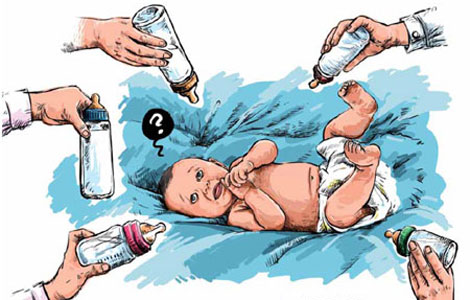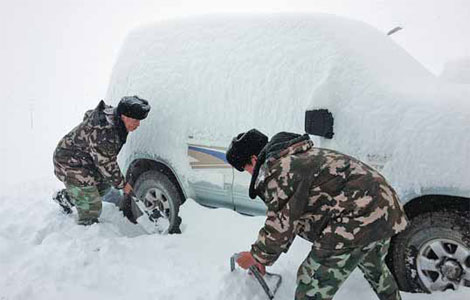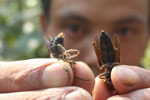China issues white paper on Tibet's development
Updated: 2013-10-22 10:53
(Xinhua)
|
|||||||||||
BEIJING - The Chinese government on Tuesday issued a white paper on Southwest China's Tibet autonomous region, detailing its comprehensive development and rapid progress over the past 60-plus years.
"The development and progress in modern Tibet results from the innate logic of its social and historical environment, and has its roots in China's progress in a larger context," says the white paper, released by the Information Office of the State Council under the title "Development and Progress of Tibet".
Describing the region prior to the 1950s "as dark and backward as medieval Europe," the white paper notes in the foreword that Tibet was a society of feudal serfdom under theocratic rule, a society characterized by a combination of political and religious powers.
According to the white paper, after a series of key historical stages including peaceful liberation, democratic reform, the establishment of the autonomous region and the reform and opening-up drive, the Tibetan people have gained freedom, equality and dignity, and are fully enjoying the fruits of modern civilization.
With six chapters, the white paper elaborates Tibet's development over the past six decades in the fields of economy, people's livelihoods, political systems, cultural preservation, religious freedom and environmental protection, among others.
Figures from the white paper show that the per capita net income of farmers and herdsmen in Tibet had maintained double-digit growth for 10 consecutive years, reaching 5,719 yuan ($944) in 2012. The per capita disposable income of urban dwellers in the region was 18,028 yuan.
Also, the gross regional product of the area rocketed from 129 million yuan in 1951 to 70.1 billion last year, marking an annual growth of 8.5 percent on average.
From 1952 to 2012, the central government appropriated 454.34 billion yuan to Tibet as financial subsidies, taking up 96 percent of the accumulated fiscal expenditures of the local government since it was founded.
Meanwhile, under a "pairing-up" support program launched by the central government in 1994, various provinces, municipalities, central government departments and major state-owned enterprises have provided personnel, materials, financial and technological support to Tibet.
In addition to economic progress, the central government pays great attention to protecting the Tibetan language and ensuring local religious activities.
By the end of 2012, there were 282,914 primary school pupils and 177,981 middle school students receiving bilingual education - with Tibetan as the principal language - accounting for 96.88 percent and 90.63 percent of the total respectively in Tibet, it says.
"Traditional religious activities such as scripture learning and debate, degree promotion, initiation into monkhood or nunhood, abhisheka (empowerment ceremony) and self-cultivation are held on a regular basis," it says.
So far, more than 40 incarnated living Buddhas have been confirmed through traditional religious rituals and historical conventions.
Related Stories
Full Text: Development and Progress of Tibet 2013-10-22 13:17
Voter turnout in Tibet tops 94%: white paper 2013-10-22 11:49
Tibet's 2012 gross output hit 70b yuan: white paper 2013-10-22 11:44
Tibet is one of world's cleanest areas: white paper 2013-10-22 11:40
Dalai Lama aims to rock Tibet's foundation: white paper 2013-10-22 11:23
Tibetan culture well preserved, developed: white paper 2013-10-22 11:05
Today's Top News
Apple expected to unveil new iPads
UK official looks to China for support
Economy to see 'good ending' in Q4
White paper on Tibet's development
Teacher killed in US school shooting
Border agreement to boost ties
US OKs Alibaba structure
Beijing works to spur global development
Hot Topics
Lunar probe , China growth forecasts, Emission rules get tougher, China seen through 'colored lens', International board,
Editor's Picks

|

|

|

|

|

|





